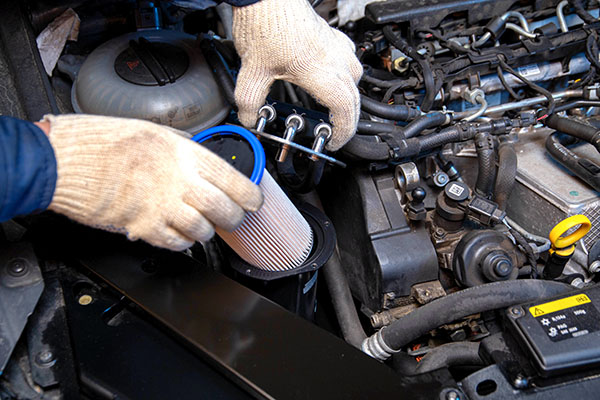
Behind every smoothly running vehicle lies a well-designed fuel system that ensures the efficient delivery of fuel to the engine. Understanding the components and functions of your car's fuel system can help you appreciate its importance and identify potential issues. That's why we will share with you a simple and easy-to-follow explanation of how this exact system works!
Components list:
- Fuel Tank
- Pump
- Filter
- Fuel Lines
- Injectors
- Pressure regulator
1. Fuel Tank
The fuel tank is the storage container for gasoline or diesel fuel. It is typically located at the rear of the vehicle, beneath the trunk or cargo area. The tank's capacity varies depending on the vehicle, and it is designed to securely hold the fuel while preventing leaks.
Many modern cars are equipped with a vapor recovery system, which helps capture and control fuel vapors that can escape from the fuel tank. The system prevents the release of harmful hydrocarbons into the atmosphere, reducing air pollution and contributing to environmental preservation.
2. Pump
It is usually located inside or near the fuel tank. The pump creates the necessary pressure to push the fuel through the fuel lines and into the engine. Some vehicles have mechanical fuel pumps driven by the engine, while others use electric fuel pumps.
3. Fuel Filter
The fuel filter is an essential component that removes impurities and contaminants from the fuel before it reaches the engine. It prevents debris and particles from clogging the fuel injectors or carburetor, ensuring a clean and consistent fuel supply. Regular replacement of the fuel filter is important to maintain optimal engine performance.
4. Fuel Lines
Fuel lines are the pipes that transport fuel from the tank to the engine. They are usually made of durable materials like steel or nylon to withstand pressure and potential exposure to heat and chemicals. Fuel lines are connected to the fuel pump, fuel filter, and engine, providing a continuous flow of fuel.
5. Injectors (or Carburetor)
Modern vehicles are equipped with fuel injectors, while older models may have a carburetor. Both systems serve the same purpose: to mix the fuel with air in the correct ratio before it enters the combustion chambers of the engine. Fuel injectors precisely spray fuel in a mist form, while carburetors use a combination of vacuum and air to atomize the fuel.
6. Pressure Regulator
The fuel pressure regulator is responsible for maintaining the proper pressure in the fuel system. It regulates the flow of fuel to the injectors or carburetors, ensuring that the engine receives the correct amount of fuel for efficient combustion. The regulator helps maintain consistent fuel pressure, compensating for variations in demand and preventing fuel flooding or starvation.
Fuel system maintenance is just one of many services offered here at Bud's Auto Repair and Transmission! Make sure to check out the list of services we offer, and book an appointment if your car requires them!